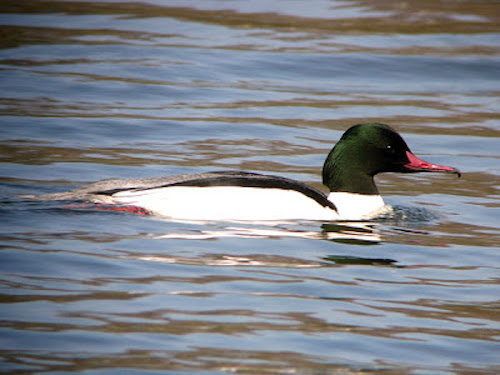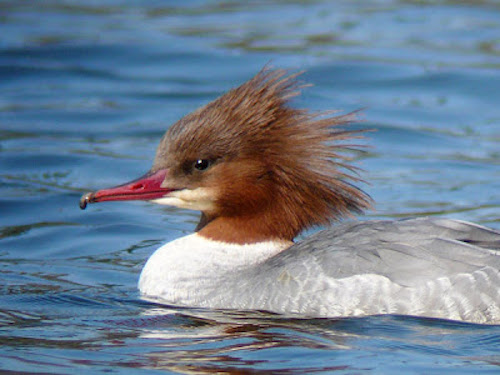Goosander Mergus merganser
Scarce passage migrant and winter visitor, mainly inland. Rare in summer.


Male and female Goosanders in Lincoln on 26th March 2007 (Russell Hayes).
In contrast to its close cousin Red-breasted Merganser, M. serrator, Goosander is doing well in Lincolnshire. It differs in that most birds winter on a wide range of inland waters rather than the sea. It was reported from over 50 sites in 2018. WeBS data indicates the rolling mean 5-year wintering population of Lincolnshire to 2018-19 was 124 (Inland 119, The Wash 2, Humber 3) while in the previous 5-year period to 2013-14 it was 149 (Inland 143, The Wash 2, Humber 4). The 25-year long term trend for England is down 6% according to Frost et al in the 2018-19 WeBS report. LBR reports show that in the last 5 years the largest flocks come from the lakes around Lincoln, where there 95 in February 2017 and 58 in in December 2015, and in the southern Fens, where Willow Tree Fen had 66 in December 2018 and 111 in February 2021. In this 5-year period there were no records in July and one in August. In late July 2020 a non-birder tweeted a photo of two female or immature Goosanders said to be on the River Freshney near Grimsby. Not quite good enough to confirm the first breeding record for Lincolnshire but enough to heighten suspicion and to encourage searching for possible breeding birds on north Lincolnshire rivers in 2021.
(Account as per new Birds of Lincolnshire (2021), included September 2022)
